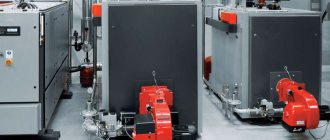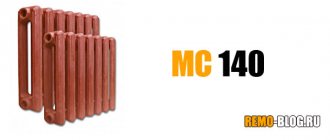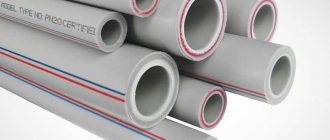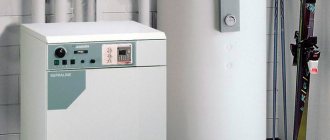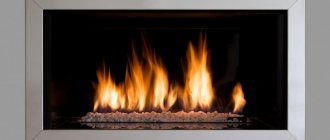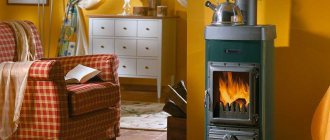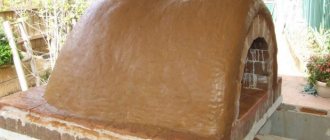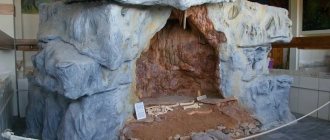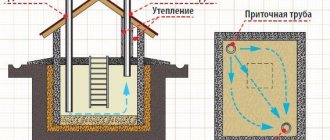Design and principle of operation of a gas fireplace
There are different models of gas fireplaces for dachas on sale - both floor-standing and hanging, everything here depends on the design idea. But their device is the same. The main element of a heating device is the firebox; it can differ not only in shape, but also in volume. For the manufacture of the fireplace body, either steel with increased heat resistance or cast iron is used.
The inside of the device contains:
- burner;
- firebox with lining;
- reflector-reflector;
- screen (necessary for directing gas from the furnace to the burner).
The combustion chamber of the fireplace has a lining that prevents the development of the destructive process at elevated temperatures. Thanks to the design features of the unit, all its components are hidden behind fake logs made of ceramic or other heat-resistant material.
You can admire the flames through the heat-resistant glass of the door. Important! When heating a home with a gas fireplace, the fuel temperature can be around 650°C. The temperature of carbon dioxide, which is discharged outside through a special pipe, reaches almost 200 °C.
To remove smoke from the burning gas, a chimney is used, through which fresh air is supplied. That is why it is necessary to control the presence of traction in it. In apartments, the chimney is replaced with a stainless steel pipe.
The operating principle of a natural gas fireplace is quite simple. When the gas and spark appear, the combustion process begins, heating the room. Due to the selected mode on the control panel, the fireplace can either maintain a fire for beauty or decorative purposes, or heat the room to specific temperatures.
As soon as the temperature reaches a certain point, the heater automatically begins to reduce power. After cooling down it turns on again. To start the device, just press a button on the control panel.
Benefits of use
Wood-burning fireplaces have had many shortcomings as a result of long-term use. These include the consumption of firewood, soot in the house, and the need to store fuel. In addition, it is now problematic to install a brick fireplace in an ordinary apartment, because you will have to coordinate the presence of a chimney and take into account the load on the walls. So a gas fireplace for the home is an excellent alternative with many advantages:
- Safety. Modern versions of the gas hearth have a sealed chamber. No gas leaks.
- At the moment of combustion there is no soot in the room. The temperature of the exhaust gas is low, which simplifies the installation of the chimney several times.
- The combustion process is automated. A person just needs to turn the thermostat knob or control the fireplace with a special remote control.
- Lack of firewood. You don’t have to constantly think about preparing them, not to mention the fact that storing this type of fuel requires a lot of space.
- The work is carried out both on main gas and using a cylinder. So you can safely purchase a gas fireplace for a summer house where regular gas is not supplied.
- Thanks to its decorative nature, it is very easy to choose an option that will be an ideal addition to your home interior.
In this video you will learn how to install a chimney to a fireplace:
Some may be put off at first by the cost of a gas fireplace for an apartment, but, in essence, it will be the same as in the case of building a traditional stove. Only in the future you won’t have to worry about soot and firewood.
Pros and cons of gas fireplaces
The demand for natural fuel fireplaces is explained by the presence of a whole range of positive aspects during its operation:
- Safe to use. Gas-powered units have a completely sealed housing, which prevents carbon monoxide from entering the living space.
- There is no need to constantly clean the chimneys and internal surfaces of the device from soot and soot during combustion.
- Working in automatic mode allows you to start a gas fireplace by pressing one button from the control panel on the front side or from the remote control. In addition, you can adjust the heating intensity.
- Compact sizes. The device does not require a large space, and there is no need to allocate space for storing firewood.
- Universal purpose. Gas fireplaces are great for heating apartments, cottages, and country houses.
- Possibility of operation of the unit from the main gas pipeline and from a cylinder.
- The efficiency of gas fireplaces is 85%.
- The power of the devices varies between 7-13 kW, fuel consumption is approximately 0.5 kg per 1 hour of operation. Such equipment is capable of heating a room of 200 square meters. m.
- Huge range of models, colors.
- Mobile gas boilers can be moved to any corner of the room without much difficulty.
- Unpretentiousness during operation.
- Quiet operation.
- No overheating of the case.
Gas-fired devices are easy to use and safe if you follow the basic installation rules
. Despite the whole list of advantages, gas fireplaces also have their disadvantages, including:
- high price;
- complex installation;
- the need to connect to the power grid;
- the first launch should be carried out only with permits from the gas and fire departments;
- A special place must be allocated for the cylinder in accordance with all safety rules.
Types of fireplaces and their costs
The first type of fireplace is a floor-standing fireplace. It has gained great demand and popularity among the advanced urban population. In its production, manufacturers actively use high-quality glass, metal and durable marble. If we talk specifically about a wall-mounted fireplace, then it is considered the most effective and favorable, according to experienced specialists in this field of activity. The corner fireplace is particularly compact and versatile.
The outdoor fireplace has the most elongated body. A mini-fireplace serves as an additional and beautiful decorative element of a living space. The cost of floor-standing fireplaces varies up to two hundred thousand Russian rubles. The price of wall-mounted fireplaces starts from two hundred thousand Russian rubles. Corner fireplaces cost on average eighty thousand Russian rubles. The most inexpensive outdoor fireplaces and mini-fireplaces, their maximum price is sixty thousand Russian rubles. Also on sale now you can see numerous harmless biosuppositories, the price of which is approximately six thousand Russian rubles.
;
Types of gas fireplaces
There are different types of device placement:
- Corner, they are mounted in the corner of the room.
- Built-in, located in a niche of the wall.
- Wall-mounted, which are mounted on the wall.
- Frontal.
Depending on the possibility of transportation, heating units can be in the form of portable gas fireplaces or stationary models.
If we classify by power, we distinguish between high-, medium- and low-power.
The variety of models allows you to choose the most suitable option for your home or apartment.
Depending on the type of fuel used, devices can run on natural gas or propane-butane.
In addition, gas fireplaces differ in the type of firebox opening:
- Devices with an open firebox. Thanks to this design of the unit, others have the opportunity to see the flames. Its efficiency indicators are up to 16%.
- Appliances with a closed firebox. The presence of a heat-resistant glass door allows you to observe the fire and increase efficiency to 70-80%.
According to the method of emitted heat, gas fireplaces can be as follows:
- With one-way radiation. This is the most common type of heating device, distinguished by a high level of heat transfer.
- With two-way radiation. Such units have a beautiful design, but they require a large volume of fresh air to function.
- With three-way radiation. Installations of this type have a presentable appearance, but due to the low degree of heat transfer they are most often installed as decorative gas fireplaces.
Important! Despite its many strengths, a gas fireplace without a chimney should be placed in an open area, in a country house. If you install it in a living space, it is imperative to provide for the removal of combustion products.
Criterias of choice
First of all, people pay attention to the type of fuel when they decide to purchase a comfortable fireplace for their home or apartment. This parameter is very important. Options for main gas are indicated by the sign “N”, and those designed to work with cylinders filled with propane-butane - “P”.
Then the purpose is determined. A fireplace may be needed to heat a room or simply as a decorative element. All gas fires usually combine both functions, but for heating you need to choose the appropriate power. It is not so important if the fireplace will simply decorate the interior - here they are more focused on fuel consumption and the appearance of the device.
Thermal power is measured in kW, calculated by the volume or area of the room. Manufacturers always indicate the maximum area, but you need to understand that this calculation was created for an initially insulated room. Typically, one kW of power is required per ten square meters.
When purchasing fireplaces powered by a cylinder, the gas consumption parameter will be important. At the time of purchase, you need to study this data in the characteristics of the model. Consumption is usually indicated at maximum heating mode, but if the fireplace burns more often in decorative mode, then this parameter will be significantly lower.
Fireplaces differ in the type of installation. Floor-standing models are popular - they are simply installed on a base, then connected to the chimney. Wall-mounted ones are fixed to the wall using brackets. Such options are preferable if there are children and pets at home. For built-in models, you will need a ready-made portal made of non-combustible materials and a chimney. Open fireboxes can be installed in a recreation area, since they do not require a chimney.
Shape and material
The shape of the firebox is important if you want to place it harmoniously in a certain interior. It can be very diverse:
- frontal for placement against walls;
- corner;
- island for the center of the room with a good view;
- double-sided through for installation in interzone partitions.
Of course, the choice of shape depends on the taste of the buyer, but it is important to take into account the connection of the chimney with gas lines. In a country house, the chimney can be routed through walls and ceilings, so the type of installation is not so important here. But in the case of an apartment, it is better to choose corner or front options, which are placed close to the external wall of the building. The gas supply pipe must not be laid hidden in the walls. There must be clear access so that the pipe can always be inspected.
When gas burns, water vapor, sulfur compounds, and carbon dioxide will be formed. If the fireplace is made of ordinary steel, the material will quickly collapse under such conditions. Cast iron options are the most reliable. But they always have a higher price, and besides, they weigh a lot. Stainless acid-resistant steel is most preferred. It has a long service life and a high price.
Additional functions
Almost all models are now produced with the functions necessary for convenient operation - electric ignition, gas control, rollover control, automatic adjustment of combustion modes. The presence of these options will also affect the cost of the fireplace insert. If your budget is modest, then it is better to choose only the most necessary functions that will ensure safe use. After all, users don’t even use most of the options or do so extremely rarely.
Such a fireplace can have a lot of functions
For many buyers, an important factor is the remote control for the purchased device. They now go to many modern models. With their help, you can easily change various available functions, turn the device on or off, without going near it.
How to choose the right gas fireplace for your garden
Before buying a specific model, you need to decide on the tasks it will perform: for decorative purposes or as a heating device for a country house. Low-power devices (3-5 kW) are perfect as interior decoration. If the installation is being considered for heating a living space, then the unit should be selected taking into account that 1 kW will be required for every 10 m - with a ceiling height of no more than 3 m.
Advice! As a device for heating a room, you should not give preference to open-type installations, since their efficiency is low and the power parameters are also small.
In specialized retail outlets there are many models with different body materials. But it is best to purchase devices made of stainless steel.
When choosing a device for heating a room, you need to take into account the area of the room and the presence of ventilation.
It is also important to consider fuel consumption if the installation will operate on liquefied propane. If a gas fireplace is used as a room decoration, this parameter will be approximately 5 times less.
It would be good if the device was automated, but such models cost an order of magnitude more. Additional fireplace options include: electric ignition, gas control, control panel, automatic mode setting.
Is it profitable or unprofitable to heat a dacha with bottled gas?
An approximate estimate of the cost of heating with bottled gas can be determined from the following calculations:
- The calorific value of a cubic meter of firewood with 12% humidity is on average 2300-2500 kW/h, while for propane this characteristic is 6710 kW/h;
- The efficiency of a gas fireplace is 97%, the wood-burning version provides no more than 25-27%;
- The cost of a cubic meter of firewood is 1,600 rubles; for propane, the price of a cubic meter will be 19 thousand rubles.
As a result of the most approximate comparison, it turns out that to obtain an equivalent amount of heat from wood and propane, you will need 1.2 and 1.1 rubles, respectively. It turns out that heating using bottled gas will cost at least no more than wood in terms of fuel costs. If you take into account the transportation tariff and losses when cutting wood, then bottled gas may turn out to be more profitable.
Gas fireplace installation
In order to correctly install a device for heating a living space, it is recommended to draw a plan in advance and have a manual for its arrangement, which is attached to the unit. According to the plan, you need to apply markings in the selected location and begin installation work:
- Floor-standing models are installed on a flat surface with a fireproof coating pre-laid on it. Walls that are very close to the unit should be covered with a metal foil screen or use brick, non-combustible stove, or ceramic tile.
- Wall-mounted devices must be secured using anchor bolts. First, the points for installation are designated, and then the holes are drilled.
- Built-in varieties are installed in a special niche made of brick; as an option, a metal frame (made of profiles) is suitable. For cladding, it is good to use tiles, which are fixed to the frame using special clamps.
- Models operating on liquefied gas also provide space for a cylinder. There are structures that already have space to accommodate such fuel tanks. To avoid troubles such as gas leaks when connecting to the mains, you need to use the services of a specialist from the local gas service.
To make a smoke channel, it is effective to use brick or other non-combustible material. The components of the chimney are placed inside the channel, and the firebox is connected.
For cladding built-in devices, you can use any type of finishing material. The main thing here is not to close the ventilation holes, which contribute to the rapid cooling of the unit. If you need to heat adjacent rooms, you will need to install air channels that will remove warm air from the firebox. Such channels can be made from fire-resistant plasterboard sheets.
Self-installation
Installation of gas fireplaces, although simple, requires certain rules to be followed. If you neglect them, you can not only damage the equipment, but also provoke an explosion or fire. It is very important to approach this matter responsibly, having studied all the general recommendations:
- Gas fires are placed only on stable surfaces made of non-combustible materials.
- The load-bearing capacity of the floors must correspond to the dimensions of the device. In the case of reinforced concrete slabs - this is 700 kg/m², wooden floors - no more than 300.
- All structures and furniture must be kept at a certain distance from the heating parts of the firebox. Usually the distance is indicated in the fireplace passport.
- The gas line must be connected using special fittings and metal pipes. This work is carried out by a specialist. If you do not have the appropriate skills and knowledge, then it is also better to entrust the installation of a gas cylinder to a professional.
- Chimneys are used from acid-resistant materials, for example, stainless steel, ceramics. The most commonly chosen type is a stainless steel sandwich chimney. The cost of ceramic options is higher. You can choose a coaxial chimney with an air duct and a built-in recuperator.
- Air must enter the firebox for efficient gas combustion. This is why air ducts or special air ducts are required in chimneys.
- Gas fires are installed only in ventilated rooms, but air from the street should not directly fall on the flame from the firebox.
- To install a fireplace built into the casing, it is necessary to make air channels in it, because Convection currents must pass freely between the fireplace itself and the casing.
If you follow simple rules, the operation of a gas fireplace will not only be completely safe, but also economical. Gas fireboxes are an excellent choice, because they are durable and silent, and do not pollute the atmosphere. They can become a central decorative and heating element in any house or apartment.
How to make a gas fireplace with your own hands
It is quite possible to make a gas fireplace for your home with your own hands if you follow certain recommendations. The main element of the device is a gas burner; it must be installed in a metal structure by connecting the control valve to the cylinder through a flexible hose. Alternatively, you can install it in brickwork.
If you make a gas fireplace with your own hands, you can save a lot. You can buy refractory bricks for 45-50 rubles apiece, and to equip the firebox you will need only 2-3 dozen. To decorate the outer part of the combustion chamber, ordinary brick is suitable; it is often used to line the portal. A special fire-resistant mixture is used as a working composition. Upon completion, the chimney is completed and the burner is installed.
A DIY home fireplace will cost much less than a store-bought one; it can be made according to an individual project
Advice! To ensure that the gas supply from the cylinder or line is turned off in a timely manner in the event of a flame extinguishment, it is worth choosing a burner with a built-in thermostatic valve.
The cost of a metal fireplace will be equal to the price of an iron sheet; its thickness should be from 3 mm. Thinner metal will quickly burn out, which will require replacement soon. Any building materials are suitable for making a portal, or you can choose a ready-made option.
Practical use
Operation of the gas version is simple. Especially for those devices that are equipped with a thermostat, electric ignition and other “convenient” additions. You just need to set the necessary parameters and turn on the fireplace. Then everything happens automatically.
In cases with simple options, you need to constantly monitor its operation to avoid emergency situations.
Purchasing and installing a gas fireplace is an excellent modern option for solving the heating problem. Additionally, it will decorate the interior of the room, bringing a touch of comfort and warmth to your home.
Device structure
Different manufacturers provide numerous options for gas fireplaces to choose from. But if you understand their structure, you can identify single key nodes that perform strictly defined functions.
Suspended version of the fireplace system
- The gas combustion process occurs in the furnace. It is this that determines the type of fireplace and can be open or closed.
- The smoke collector concentrates combustion products before they enter the chimney. Its purpose is to ensure that carbon monoxide evaporates without loss and does not remain in the room.
- Do not forget that the main purpose of such a fireplace is heating, so the heat exchanger is a mandatory part. With its help, heat is released from the increased area.
- The gas supply to the direct place of its combustion is provided by a gas burner.
- Dummy firewood.
- Flame control system.
With this configuration, it is not difficult to imagine the operating principle of the fireplace. After switching on, which is done from the control panel, gas supply begins. At the same time, automatic ignition occurs, which works thanks to the piezoelectric effect. Temperature sensors send a signal to the controller and “monitor” the air condition in the room. When a certain temperature is reached, the gas supply decreases and the flame intensity drops.
A gas fireplace without a chimney, despite its obvious advantages, involves additional work. In its natural form, it can only be used outdoors, for example, in the country. Working indoors, he still needs to remove combustion products.
Relaxation area in the apartment space
The fireplace deserves its name due to the fact that there is no need to install a chimney or maintain its height to ensure the required draft. The burnt gases are discharged through a special pipe through the wall to the street. It is also possible to equip an apartment with such a fireplace, but this requires permission from the management company.
